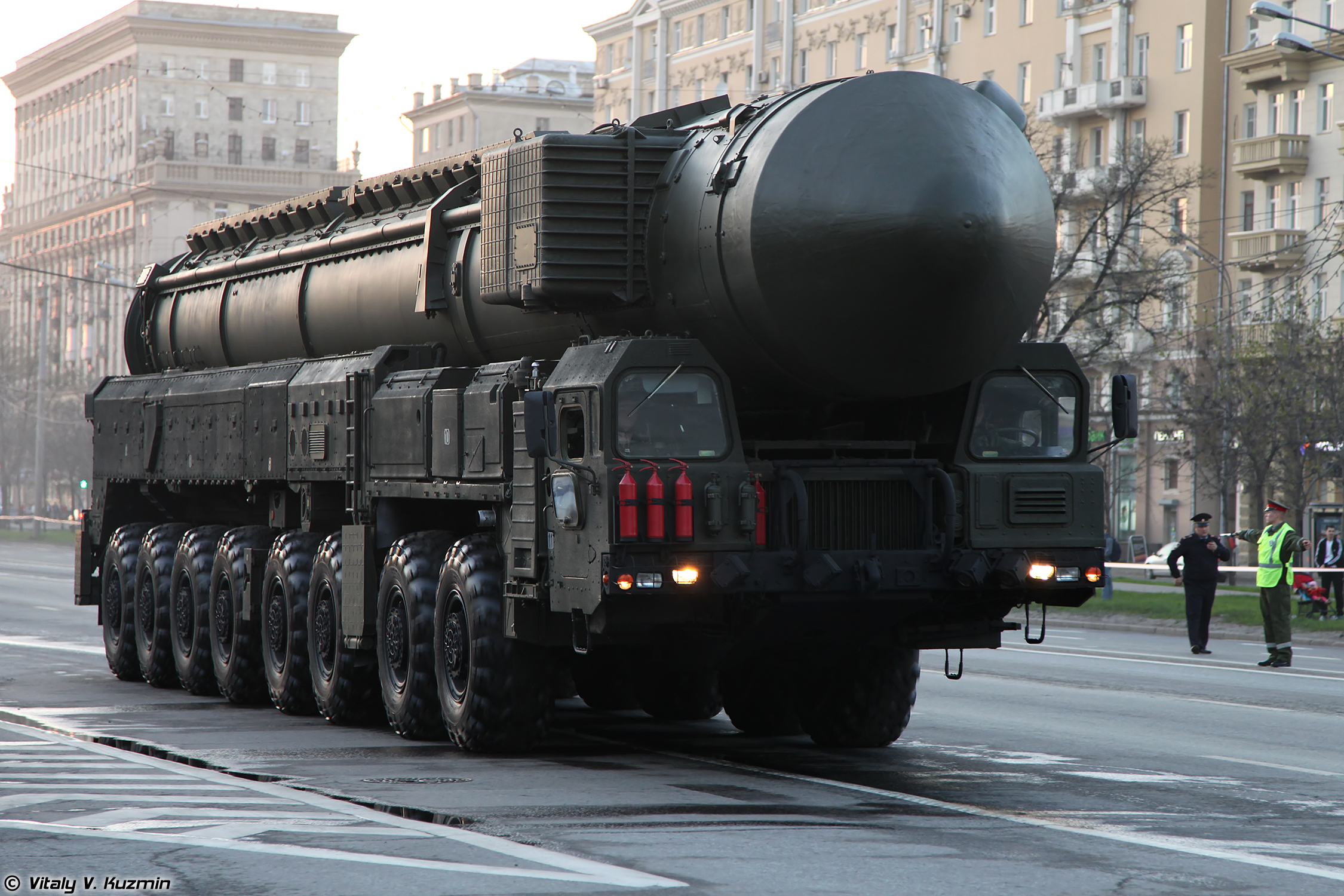By: Alison Keefner*
On February 14th, the New York Times reported that the Russian military had deployed two operational battalions of a new model of cruise missiles, one in south Russia at a missile testing site near the city of Volgograd and the other at an unknown location, in defiance of a Cold War-era arms treaty[i]. The news of the missile deployments sent alarm bells ringing for foreign policy officials and dedicated Russia-watchers alike. However, the development and deployment of these missiles has been a plan of Russian President Vladimir Putin for a long time now. Russia has issued the first real strategic challenge to President Trump since his inauguration, and the new president must respond strongly if he wants to be the same man who stands up to Russia that he said he would be on the campaign trail.
The Rundown
Let’s start with the missiles in question. The nuclear-capable missile that Russia has made operational is a ground-launched cruise missile known as the SSC-8. Not much is known about the missile beyond this. Jeffrey Lewis, the director is the East Asian Nonproliferation Program at the Middlebury Institute of International Studies at Monterey speculates that the SSC-8 is a ground-based variant of the Kalibr missile [ii]. The Kalibr missile is a submarine-and-ship launched missile with a maximum range of 1,500 miles. The existence of the missile itself is not new knowledge: it was first tested in 2008 at the beginning of the first Obama Administration[iii]. However, it was not decided until 2014 that the SSC-8 violated the Intermediate-Range Nuclear Forces Treaty (INF) signed in 1987 between the United States and the Soviet Union.
The INF Treaty was signed in 1987 by President Ronald Reagan and General Secretary Mikhail Gorbachev. The mid-1970s saw the Soviet Union nearly catch up to the United States in terms of missile capability with the development of the SS-20 surface-launched missile. The SS-20 had a maximum range of 5,000 kilometers which “permitted it to cover targets in Western Europe, North Africa, the Middle East, and, from bases in the eastern Soviet Union, most of Asia, Southeast Asia, and Alaska”[iv]. The INF Treaty mandated the termination of each state’s stockpile of ground-launched missiles that had a range of between 500 and 5,000 kilometers, as well as their associated hardware (i.e. support structures) within three years of the signing of the treaty.
Given its maximum range of 1,500 miles, the SSC-8 missile is in clear violation of the INF Treaty. The United States has known about the existence of the missile since 2008, with the missile announced as being in violation of the INF Treaty for the first time in the 2014 edition of the State Department’s yearly report, Adherence to and Compliance with Arms Control, Nonproliferation, and Disarmament Agreements and Commitments[v]. Towards the end of President Obama’s tenure, the Russian military looked to be moving forward with an increased production of SSC-8 missiles, clearly going beyond the number needed for what could be considered a test flight [vi]. Russia has been moving from missile research to missile deployment.
The Strategic Context
While the existence of missiles is not recent news, the movement of operational battalions with an increased number of missiles is not something to be taken lightly. The discovery of the increased stockpile of SSC-8 missiles took place a month prior to the results of the presidential election being announced, and put a sour tone on the end of Obama’s fraught relationship with the former Cold War adversary. However, with a new administration that simultaneously advocates expanding our own nuclear arsenal and improving our relationship with Russia, the movement of these battalions makes for an incredibly tricky first encounter with the Russian government.
One battalion of these missiles is deployed near the southern border of Russia, not far from the city of Volgograd. Volgograd is situated within a few hundred miles of both the Ukrainian and Georgia borders, two areas where Russia has been and continues to be involved in their internal conflicts. With a range of about 1,500 miles, the missile possesses the capability of reaching nearly all North Atlantic Treaty (NATO) states in Europe, posing a serious threat to the Western Alliance [vii].
In a report to Congress, the vice chairman of the Joint Chiefs of Staff, General Paul Selva, argued that the deployment of these missiles poses a threat to U.S. facilities in Europe, as well as NATO facilities [viii]. While General Selva claimed that the Trump Administration was looking into ways to confront the Russian government about said missiles, no specifics were offered other than that, “I don’t have enough information on their intent to conclude, other than that they do not intend to return to compliance,” indicating that the Russians do not seem willing to negotiate the removal of the missiles [ix].
In a speech made two days after the deployment, President Putin addressed the Federal Security Service Board and spoke about the recent NATO conference where Russia was marked as the main threat to the alliance, coming to the conclusion that NATO expansion is a provocation against the Russian state. President Putin stated that, “The FSB [Federal Security Board] plays a key part in protecting our constitutional order and our country’s sovereignty, and in protecting our people from threats at home and abroad”[x]. President Putin has made clear what he thinks of the collective security arrangement in Europe, and the movement of illegal missiles may shed light on how he intends to defend his state. Russia has doubled down on the belief that the deployment is directed at NATO, issuing a challenge to the United States.
A Course of Action
To date, President Trump has not had much to say on the deployment of Russian missiles given the White House’s focus on mitigating the hysteria surrounding supposed contacts between the Trump campaign and transition team, and Russia, as well as investigations into Russian meddling in the 2016 presidential election. He has only mentioned it when questioned by Reuters, responding that it was important to him, and that he would bring it up with President Putin when they meet [xi]. Despite this, U.S. officials have confronted their Russian counterparts regarding the missiles, but have hit roadblocks at each turn. The Russians have denied the existence of the missiles, calling it “fake news”, and culminating with President Putin’s spokesperson issuing a statement that read, “We disagree with and reject any such accusations. Russia has adhered to and will adhere to all its international obligations, including those under the INF Treaty [xii].”
If President Trump wants to be true to his campaign promises and be tough on Russia, then he cannot afford to brush this off until he can meet the Russian president in person. The top brass in the military have come to the conclusion that the deployment of these missiles on the southern border of Russia puts both vulnerable countries such as Ukraine and the NATO framework itself in their crosshairs. It is a positive step that Trump is aware of the situation and plans to speak to President Putin about it, but it is unknown if or when the two will meet, raising the possibility that should a conversation occur, it may be too little too late.
In the meantime, the president is not short of options to respond to these missiles. Continuing to do nothing to deter missile movement that can be dangerous to our European allies is a risk that cannot be taken. Trump has in his hands a Congress that would be more than willing to take action against Russia with support coming from both sides of the isle, a rarity in a hyper-polarized Congress [xiii]. President Trump needs to be vocal about Russia’s violation of the INF Treaty. Our allies are worried, and it is our obligation as a member of NATO, as a member of the United Nations, and as a signing member of the INF Treaty to take action against those who violate the law. He needs to assure our allies that a violation of a treaty of the magnitude of the INF will not be tolerated. President Trump, in order to keep our leadership position on the world stage from slipping any further than it already has needs to show Russia that we and our allies are not to be trifled with. The United States must consider increasing the number of missiles deployed in Eastern Europe as a deterrence to Russia’s illegal missile deployments. Former Ambassador Eric Edelman has gone as far as to suggest that he development of new missiles, such as a long-range standoff missile, and a re-fielding of howitzers in the Baltics would be able to force Russia’s hand in the matter [xiv]. While an increase in NATO deployment of missiles is an option that ought to be used and exhausted, the nuclear option (no pun intended) of a U.S. withdrawal from the INF Treaty cannot be entertained. It would be a massive break from our own nuclear policies, and could set off a new nuclear arms race.
Conclusion
There is a lot of uncertainty surrounding what the Trump Administration will do in response to this illegal missile deployment. President Trump has been unclear on his position regarding Russia, going from claiming that he would be the best one to stand up to Russia, to asserting that he wants the United States to have better ties with Russia. We do not know which President will show up to the table should Russia escalate their missile deployment: will it be the hard-liner, or the appeaser? What is clear is that if he wants to be tough on Russia President Trump needs to take action and needs to take action soon. The silence of the Trump administration on the movement of illegal, nuclear capable missiles in a country that has been repeatedly adversarial to our own is deafening.
Works Cited
[i] Gordon, Michael R. “Russia Deploys Missile, Violating Treaty and Challenging Trump,” New York Times, February 14, 2017. https://www.nytimes.com/2017/02/14/world/europe/russia-cruise-missile-arms-control-treaty.html.
[ii] Gibbons-Neff, Thomas. “This is the Ground-Launched Cruise Missile that Russia has Reportedly Just Deployed,” The Washington Post, February 15, 2017 https://www.washingtonpost.com/news/checkpoint/wp/2017/02/15/this-is-the-ground- launched-cruise-missile-that-russia-has-reportedly-just-deployed/?utm_term=.fcd47c96979e#comments.
[iii] Ibid.
[iv] U.S. Department of State. “Treaty Between the United States of America And the Union Of Soviet Socialist Republics on the Elimination of their Intermediate-Range and Shorter-Range Missiles (INF Treaty)”. https://www.state.gov/t/avc/trty/102360.htm.
[v] Woolf, Amy F. Russian Compliance with the Intermediate Range Nuclear Forces (INF)Treaty: Background and Issues for Congress. Washington D.C.: Congressional Research Center, 2017.
[vi] Gordon, Michael R. “Russia Is Moving Ahead with Missile Program That Violates Treaty, U.S. Officials Say,” New York Times, October 16, 2016, https://www.nytimes.com/2016/10/20/world/europe/russia-missiles-inf-treaty.html?action=click&contentCollection=Europe&module=RelatedCoverage®ion =Marginalia&pgtype=article&_r=0
[vii] Welna, David. “U.S. Confirms Russian Missile Deployment Violates Nuclear Treaty: Now What?” NPR. March 10, 2017. http://www.npr.org/sections/parallels/2017/03/10/519498196/u-s-confirms-russian- missile-deployment-violates-nuclear-treaty-now-what
[viii] Gordon, Michael R. “Russia Has Deployed Missile Barred by Treaty, U.S. General Tells Congress,” New York Times, March 8, 2017. https://www.nytimes.com/2017/03/08/us/politics/russia-inf-missile-treaty.html
[ix] Ibid.
[x] Putin, Vladimir. “Meeting of Federal Security Service Board.” President of Russia. Last modified February 16, 2017. http://en.kremlin.ru/events/president/news/53883
[xi] Welna, David. “U.S. Confirms Russian Missile Deployment Violates Nuclear Treaty: Now What?” NPR. March 10, 2017. http://www.npr.org/sections/parallels/2017/03/10/519498196/u-s-confirms-russian- missile-deployment-violates-nuclear-treaty-now-what
[xii] Ibid.
[xiii] Rubin, Jennifer. “Is Trump Giving Putin a Pass on Missile Deployment?” The Washington Post, March 9, 2017. https://www.washingtonpost.com/blogs/right-turn/wp/2017/03/09/is-trump-giving-putin-a-pass-on-a-missile-deployment/?utm_term=.3166cf0c9d89
[xiv] Ibid.
*Disclaimer: The content contained in the following material is the sole ownership of the author and does not reflect the views of the Towson University Journal of International Affairs nor Towson University in any respect whatsoever







